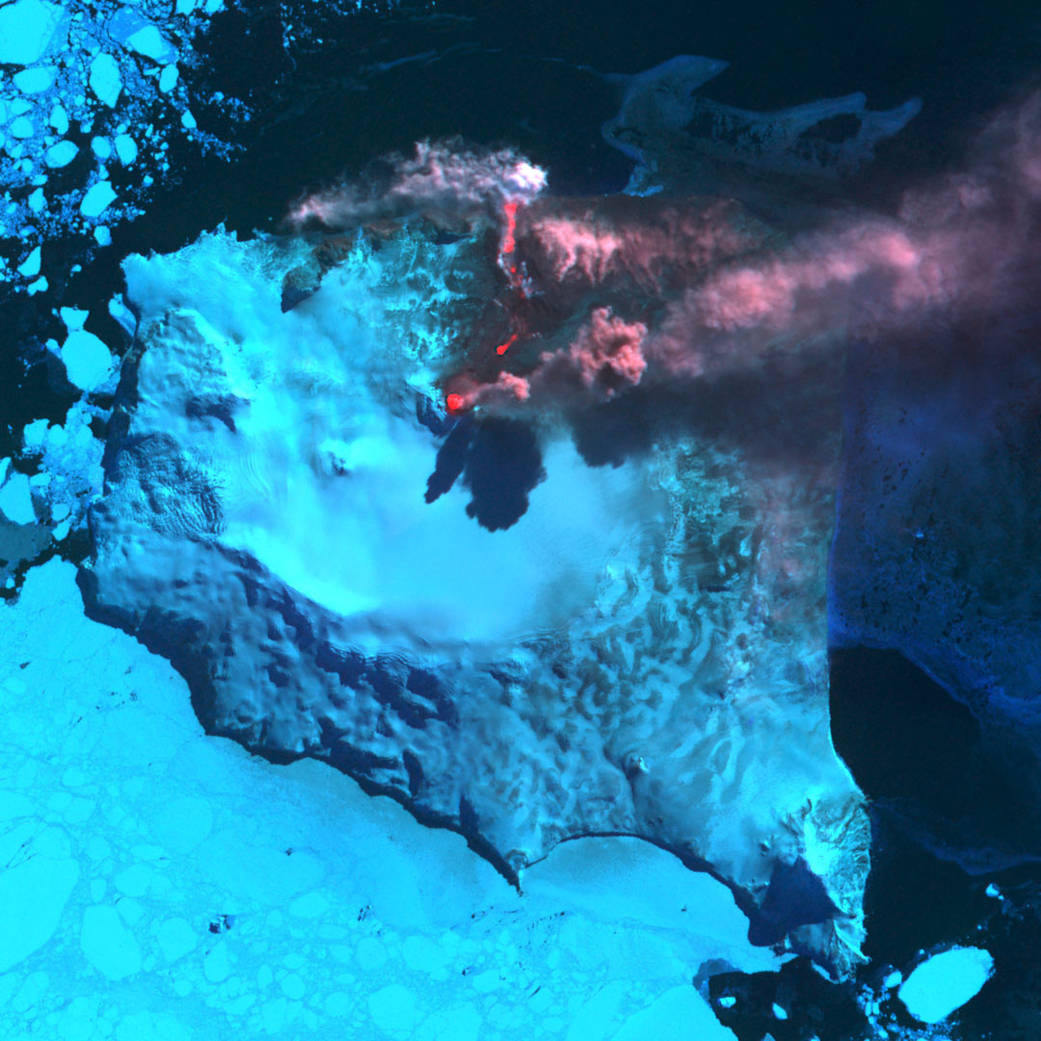
The first recorded eruption of Mount Belinda Volcano, on Montagu Island in the remote South Sandwich Islands, began in October 2001. The eruption was first detected by the MODIS Thermal Alert System an automated volcano alert system based on thermal anomalies, or “hot spots,” detected in satellite data. The first visual confirmation of the eruption came from ships that passed the islands in February and March 2003, at which time the volcano was still erupting.
The Advanced Spaceborne Thermal Emission and Reflection Radiometer (ASTER) flying onboard NASA’s Terra satellite captured this image of Mount Belinda on September 23, 2005. In this false-color image, red indicates hot areas, blue indicates snow, white indicates steam, and gray indicates volcanic ash. An increase in activity in the fall of 2005 has produced an active 3.5-kilometer-long (approximately 2.2 mile-long) lava flow, extending from the summit cone of Mount Belinda all the way down into the sea. The flow spreads northeast from the volcanic vent, and then becomes diverted due north by a narrow, rocky ridge, or arete. A 90-meter-wide (98.4-yard-wide) lava channel appears 1 kilometer (.62 miles) from the summit. Where the hot lava reaches the ocean, the water sends up a steam plume. On October 11, 2005, the crew of a British Royal Air Force flight observed a steam plume in the same area, suggesting the lava was still flowing.Image Credit: NASA/Jesse Allen/Earth Observatory/HIGP Thermal Alerts Team

























